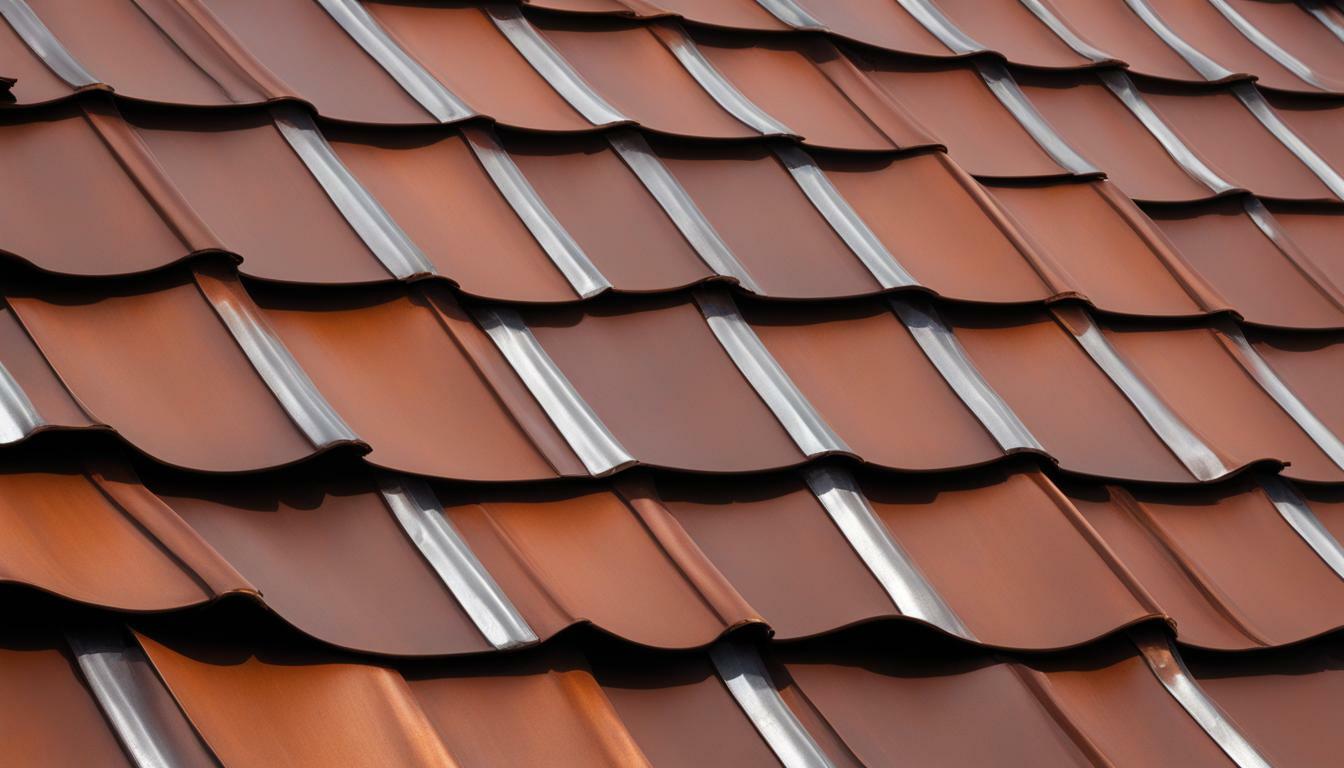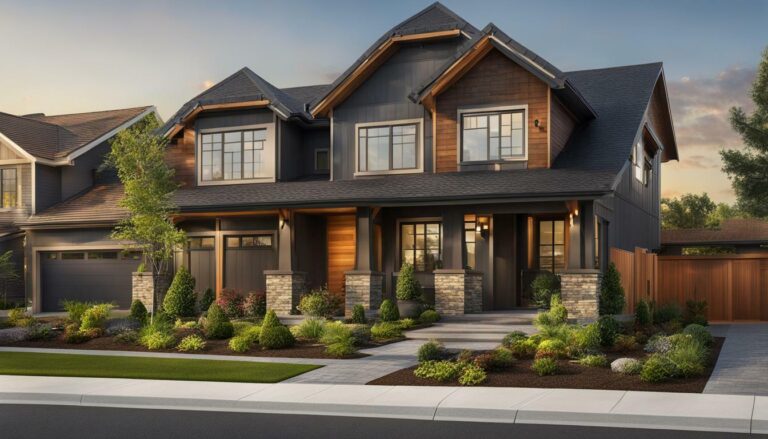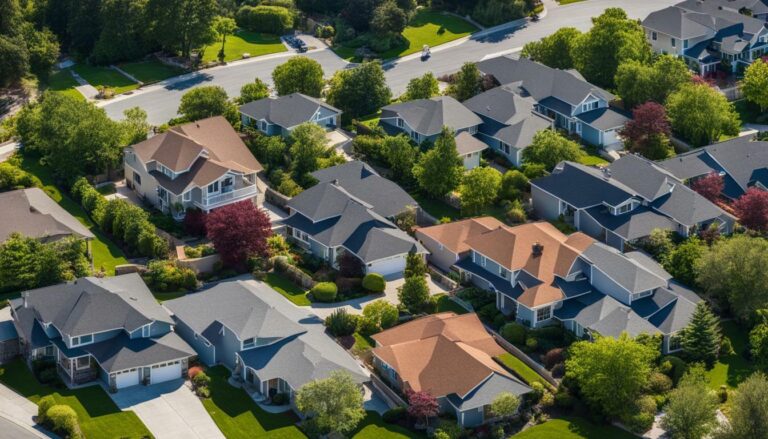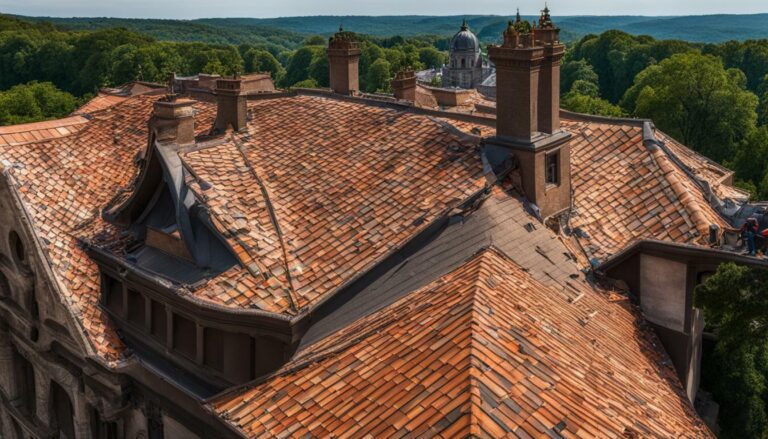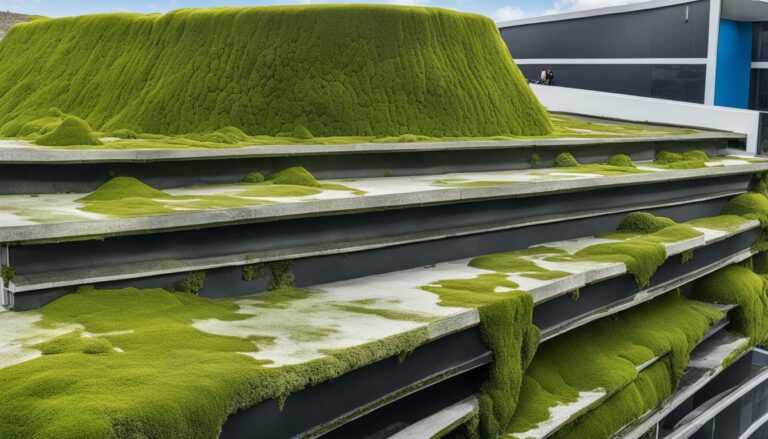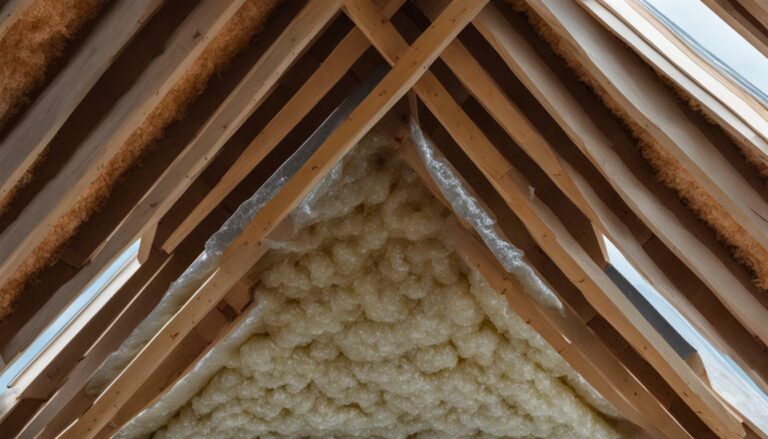Uncover the Longevity: Your Guide to Metal Roof Lifespan
Metal roofing has become a popular choice for residential homes due to its durability and style. Homeowners are increasingly opting for metal roofs that offer long-lasting protection and aesthetic appeal. If you’re considering metal roofing for your home, it’s essential to understand the lifespan and durability of this roofing option to make an informed decision.
When it comes to metal roof lifespan, different metals have varying levels of durability. Aluminum roofs are lightweight and can last for years, providing excellent resistance to corrosion. Copper roofs, on the other hand, are known for their remarkable longevity, with some lasting over 100 years. Steel roofs offer affordability and a lifespan of around 50 years, making them a popular choice for many homeowners. Additionally, zinc roofs have self-healing properties and can last up to 80 years, providing long-term durability and protection.
Key Takeaways:
- Metal roofing is a durable and stylish choice for residential homes.
- The lifespan of a metal roof can range from 40 to 70 years, depending on the type of metal used.
- Aluminum roofs are lightweight and corrosion-resistant, lasting for years.
- Copper roofs have exceptional longevity, with some lasting over 100 years.
- Steel roofs are affordable and have a lifespan of around 50 years.
The Average Life Expectancy of Metal Roofs
The lifespan of a metal roof can range from 40 to 70 years, depending on the type of metal used. Metal roofing has become a popular choice for residential homes due to its durability and style. Homeowners are increasingly opting for metal roofs because they offer long-lasting protection and require minimal maintenance.
Among the various metals used for roofing, each has its own lifespan and characteristics. Aluminum roofs, for example, are lightweight and can last for years, making them an excellent choice for homeowners who value longevity. Copper roofs, on the other hand, have been known to last over 100 years, offering unparalleled durability and a distinct aesthetic appeal.
Steel roofs are a cost-effective option with a lifespan of around 50 years. They provide excellent protection against harsh weather conditions and offer superior strength. Zinc roofs, known for their self-healing capabilities, can last up to 80 years, further reducing the need for frequent repairs and replacements.
| Metal Type | Average Lifespan |
|---|---|
| Aluminum | 40-70 years |
| Copper | 100+ years |
| Steel | 50 years |
| Zinc | 80 years |
When choosing a metal roof for your home, it’s essential to consider not only the aesthetics but also the lifespan of the material. The average lifespan of a metal roof ensures long-term protection, saving you money on future repairs and replacements. By understanding the average life expectancy of different metals, you can make an informed decision that meets your home’s requirements and budget.
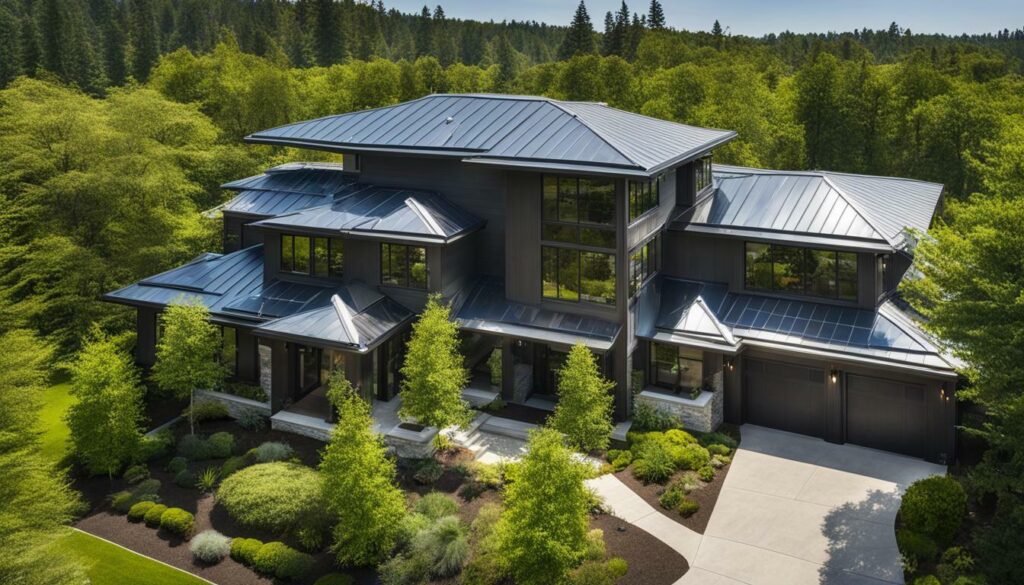
Factors Affecting Metal Roof Lifespan
Proper installation, climate, maintenance, gauge, and paint finish are factors that can significantly impact the lifespan of a metal roof. Let’s examine each of these factors in more detail to understand their role in determining how long your metal roof will last.
Proper Installation
One of the most crucial factors affecting the longevity of a metal roof is proper installation. A poorly installed roof can lead to leaks, poor drainage, and reduced structural integrity. It is essential to work with experienced professionals who understand the specific requirements of metal roof installation. By ensuring a proper installation, you can maximize the lifespan of your metal roof and avoid costly repairs down the line.
Climate
The climate in which you live can significantly impact the lifespan of your metal roof. Extreme weather conditions like heavy snowfall, high winds, and intense heat can take a toll on the roof’s performance. Selecting a metal roof that is suitable for your specific climate conditions is crucial. For example, if you live in an area prone to heavy snowfall, choosing a metal roof with a high snow load rating is essential to ensure its longevity and durability.
Maintenance
Regular maintenance is another critical factor in extending the lifespan of your metal roof. Conducting routine inspections, clearing debris, and keeping gutters clean can help prevent issues such as rust, corrosion, and leaks. Additionally, proper ventilation is essential to maintain optimum airflow and temperature control, preventing moisture buildup that can lead to roof damage. By investing time and effort into regular maintenance, you can ensure that your metal roof remains in excellent condition for many years to come.
Gauge and Paint Finish
The gauge of the metal used in your roof and the quality of the paint finish are also significant factors in determining the lifespan of a metal roof. A thicker gauge metal is generally more durable and resilient, providing better protection against the elements. Additionally, a high-quality paint finish helps to protect the metal from rust and corrosion. Choosing a metal roof with the appropriate gauge and a high-quality paint finish will contribute to its longevity and overall performance.
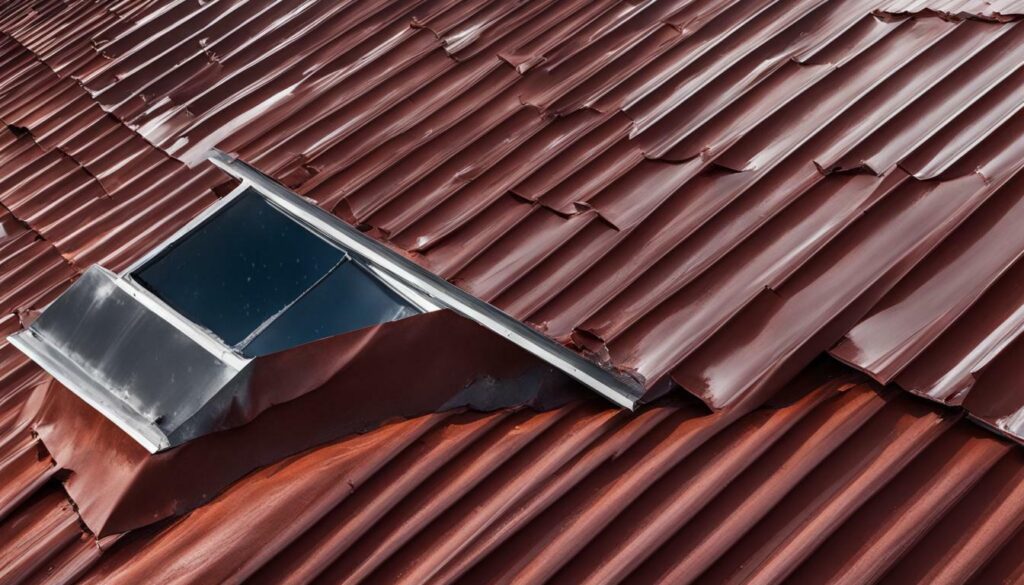
In summary, proper installation, climate considerations, regular maintenance, and the gauge and paint finish are all critical factors that can affect the lifespan of a metal roof. By understanding and addressing these factors, you can ensure that your metal roof provides you with long-lasting protection for your home, adding value and durability for years to come.
Metal Roof Maintenance Tips
Regular inspections, proper ventilation, and high-quality roofing components can help extend the life of a metal roof. By following these maintenance tips, you can ensure that your metal roof remains in optimal condition for years to come.
First and foremost, regular inspections are vital for detecting and addressing any issues before they escalate. Inspect your metal roof at least twice a year, examining the surface for any signs of damage, such as dents, rust, or loose screws. Additionally, check the gutters and downspouts for debris that could cause clogging and lead to water accumulation on the roof.
Proper ventilation is crucial for maintaining the longevity of your metal roof. Good airflow helps regulate temperature and moisture levels, preventing the buildup of condensation that could damage the metal over time. Make sure that your attic or roof space is adequately ventilated by installing vents or fans to promote air circulation.
Using high-quality roofing components is essential for maximizing the lifespan of your metal roof. Opt for top-grade materials, such as fasteners and sealants, that are specifically designed for metal roofing. These components will provide better protection against the elements and ensure the integrity of your roof.
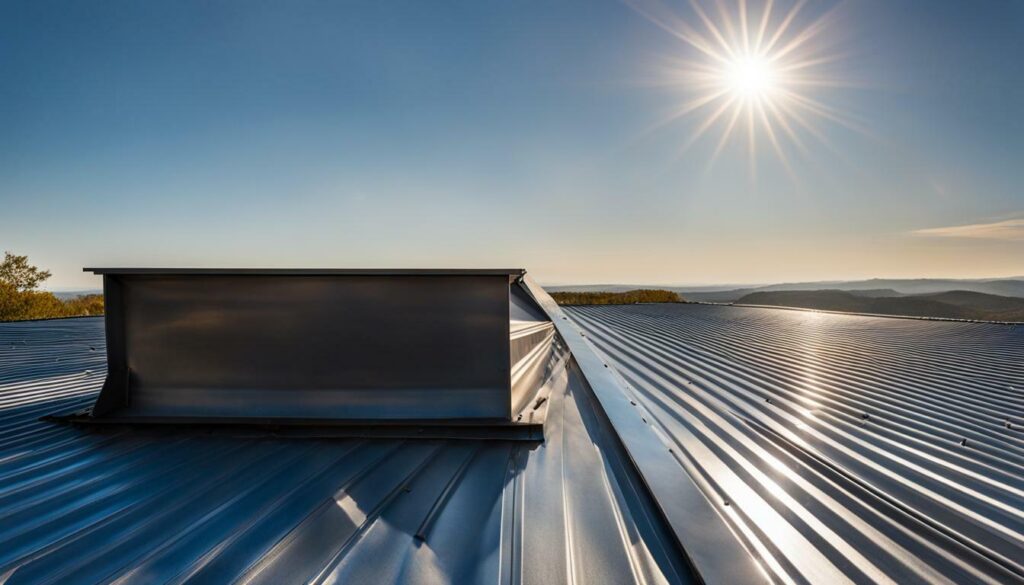
| Maintenance Tips | Frequency |
|---|---|
| Clean gutters and downspouts | At least twice a year |
| Inspect roof for damage | At least twice a year |
| Promote ventilation | Ongoing |
| Use high-quality roofing components | During installation and repairs |
Advantages of Metal Roofs over Shingle Roofs
Metal roofs are more long-lasting compared to shingle roofs, which typically last around 10-20 years. When it comes to durability and lifespan, metal roofing outshines shingles, making it a smart investment for homeowners seeking a long-term solution for their roofs. Metal roofs can last anywhere from 40 to 70 years, depending on the type of metal used, providing homeowners with peace of mind and cost savings in the long run.
One of the key advantages of metal roofs is their ability to withstand various weather conditions. Whether it’s heavy snowfall, high winds, or intense heat, metal roofs are built to withstand the elements, providing reliable protection for your home. This durability is particularly important for homeowners living in areas prone to severe weather, as metal roofs offer superior resistance to damage compared to shingle roofs.
“Metal roofs are known for their longevity and durability. They can withstand extreme weather conditions and outlast traditional shingle roofs.”
In addition to their longevity, metal roofs also offer energy efficiency benefits. By reflecting solar heat, metal roofs can help keep your home cooler in the summer, reducing the need for excessive air conditioning and ultimately lowering energy costs. This eco-friendly feature not only benefits the environment but also contributes to long-term cost savings for homeowners.
Investing in a metal roof also adds value to your home. The long lifespan and low maintenance requirements of metal roofs make them an attractive selling point for potential buyers. According to a study by Remodeling Magazine, homeowners can recoup an average of 85.9% of the cost of a metal roof when selling their home, making it a wise investment that adds both aesthetic appeal and financial value.

| Feature | Metal Roof | Shingle Roof |
|---|---|---|
| Lifespan | 40-70 years | 10-20 years |
| Durability | Superior | Less durable |
| Energy Efficiency | Reflects solar heat | Less energy efficient |
| Resale Value | Attractive selling point | Less appealing |
As you consider your roofing options, it’s important to weigh the longevity and benefits that metal roofs offer. With their superior durability, energy efficiency, and value-added benefits, metal roofs are a reliable and long-lasting choice for homeowners looking for a roof that will stand the test of time.
The Value of Investing in Metal Roofing
Metal roofs provide value for your investment and can save money in the long run. With a lifespan ranging from 40 to 70 years, depending on the type of metal used, metal roofs are a durable and long-lasting option for residential homes. Whether you choose aluminum, copper, steel, or zinc, each metal offers its own unique advantages and lifespan.
Aluminum roofs are lightweight and corrosion-resistant, making them an excellent choice for homeowners looking for a low-maintenance solution. With proper installation and regular maintenance, aluminum roofs can last for many years, providing unmatched durability. As an added bonus, aluminum is a highly recyclable material, making it an eco-friendly option for environmentally conscious homeowners.
Copper roofs, on the other hand, are known for their timeless beauty and exceptional longevity. With a lifespan that can exceed 100 years, copper roofs offer unmatched durability and are often considered a lifetime investment. Over time, copper develops a unique patina that adds character and charm to your home, making it a popular choice for homeowners who value aesthetics and longevity.
If you’re looking for an affordable and durable option, steel roofs are worth considering. With a lifespan of around 50 years, steel roofs offer excellent resistance to extreme weather conditions and can withstand impact from hail, debris, and strong winds. They are available in a variety of styles and finishes, allowing you to achieve the desired look for your home without compromising on durability.
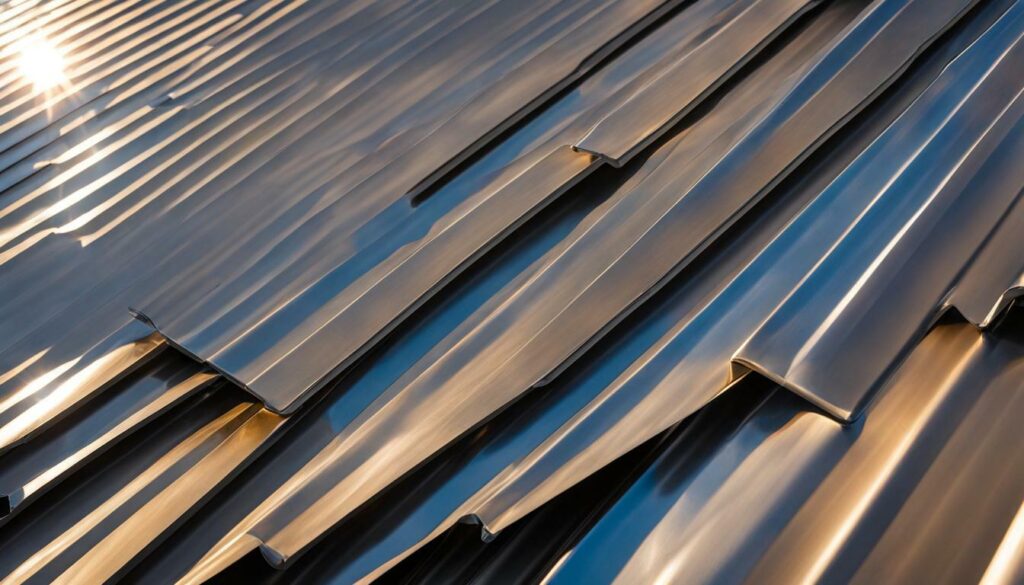
Zinc roofs offer a unique self-healing feature, making them highly resistant to corrosion and rust. This self-healing property allows minor scratches and imperfections to naturally blend in over time, extending the lifespan of the roof. With proper installation and regular maintenance, zinc roofs can last up to 80 years, providing long-term protection for your home.
| Metal Type | Lifespan | Advantages |
|---|---|---|
| Aluminum | 40+ years | Lightweight, corrosion-resistant, recyclable |
| Copper | 100+ years | Timeless beauty, exceptional durability, unique patina |
| Steel | 50+ years | Affordable, impact-resistant, variety of styles |
| Zinc | 80+ years | Self-healing, corrosion-resistant, long-lasting |
Investing in a metal roof not only provides long-lasting protection for your home but also offers cost savings in the long run. The durability of metal roofs reduces the need for frequent repairs or replacements, ultimately saving you money on maintenance and material costs. Additionally, metal roofs are energy-efficient, helping to reduce heating and cooling expenses throughout the year.
By choosing a metal roof, you are making an investment that will provide value and peace of mind for years to come. With their exceptional lifespan and durability, metal roofs ensure that your home remains protected, beautiful, and financially beneficial in the long term.
Choosing a Metal Roof: Considerations for Longevity
Selecting quality materials and working with expert installers are crucial considerations for ensuring the longevity of a metal roof. When choosing metal roofing for your home, it’s important to opt for high-quality materials that can withstand the test of time. Look for reputable manufacturers who offer warranties on their products, as this indicates their confidence in the durability and lifespan of their metal roofs.
Expert installers play a significant role in maximizing the longevity of your metal roof. Improper installation can lead to leaks, premature aging, and other issues that can shorten the lifespan of your roof. Look for experienced roofing contractors who specialize in metal roofing installation. They will have the knowledge and expertise to handle the unique requirements of metal roofs, ensuring that your roof is installed correctly and will last for many years to come.
In addition to material selection and expert installation, it’s important to consider other factors that can impact the lifespan of your metal roof. Climate, for example, plays a significant role in determining the longevity of your roof. Extreme weather conditions such as heavy snowfall or high winds can put additional stress on your roof. Therefore, it’s important to choose a metal roof that is specifically designed to withstand the climate challenges of your area.
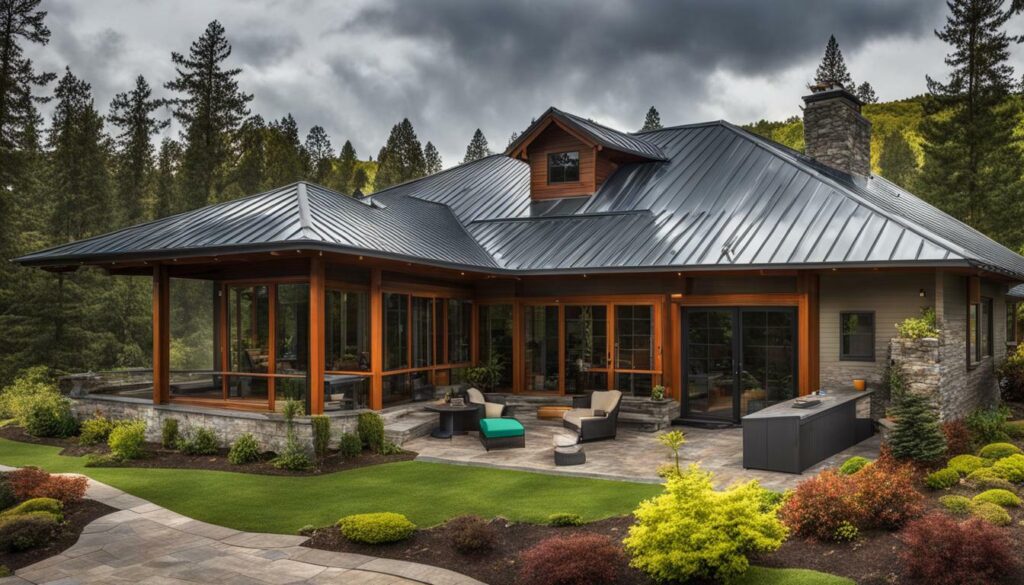
- Long-lasting durability: A high-quality metal roof can last for several decades, providing you with long-term protection and peace of mind.
- Energy efficiency: Metal roofs are known for their excellent energy efficiency, helping to reduce your heating and cooling costs.
- Low maintenance: Metal roofs require minimal maintenance compared to other roofing materials, saving you time and money in the long run.
- Resistant to fire, pests, and rot: Metal roofs are non-combustible and impervious to pests, mold, and rot, ensuring the structural integrity of your home.
By considering these factors and making informed decisions, you can ensure that your metal roof will stand the test of time and provide you with durable and reliable protection for your home. Remember to select quality materials, work with expert installers, and choose a metal roof that is designed to withstand the specific climate challenges of your area. With these considerations in mind, you can enjoy the benefits of a long-lasting metal roof for many years to come.
Climate Considerations for Metal Roofs
Climate conditions can have an impact on the lifespan and durability of a metal roof. Extreme weather events, such as heavy snowfall, hailstorms, and high winds, can put stress on the roof’s materials and potentially lead to damage or premature aging. It is important to choose a metal roof that can withstand the specific climate conditions of your area to ensure its long-term performance.
One key factor to consider is the snow load capacity of the metal roof. In areas with heavy snowfall, it is crucial to select a roof that has been designed to handle the weight of accumulated snow. This will help prevent structural damage and maintain the integrity of the roof over time.
Furthermore, regions prone to high winds require a metal roof that can withstand the force and pressure exerted by strong gusts. Look for roofs that have been tested and certified to meet wind resistance standards to ensure their durability in these conditions.
| Climate Considerations | Metal Roof Recommendations |
|---|---|
| Heavy Snowfall | Choose a metal roof with a high snow load capacity to avoid structural damage. |
| High Winds | Opt for a metal roof that has been tested and certified to withstand strong gusts. |
In addition to selecting a metal roof suitable for your climate, regular maintenance is essential in prolonging the lifespan of the roof. Clearing snow and debris, inspecting for any signs of damage, and addressing any issues promptly will help prevent more significant problems from developing.
By considering climate conditions and implementing proper maintenance practices, you can ensure that your metal roof remains durable and provides long-lasting protection for your home.
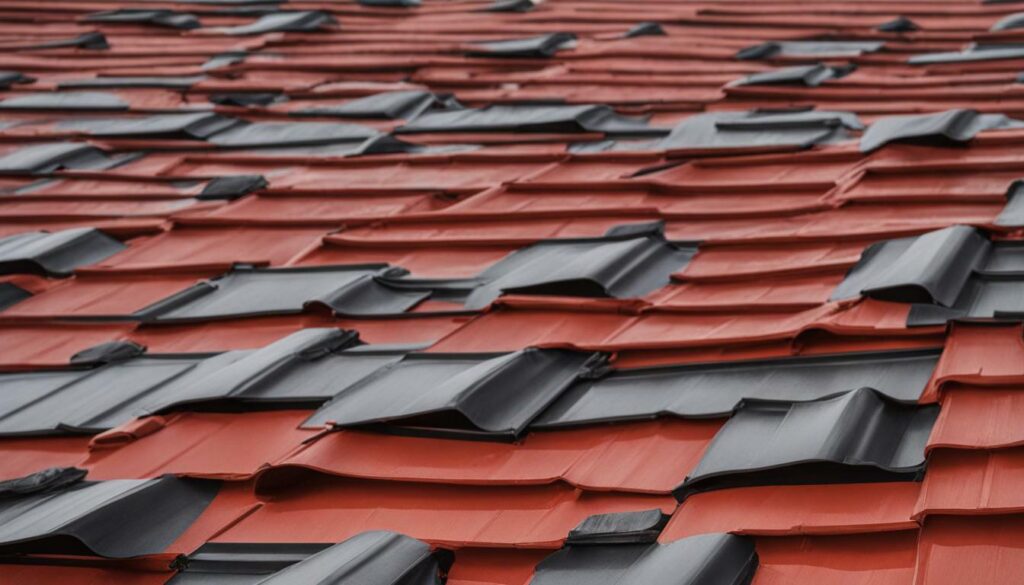
Understanding the lifespan of a metal roof and the factors that influence it is crucial for homeowners looking to invest in a durable and long-lasting roofing solution. Metal roofing has gained popularity among residential homes due to its durability and style. With lifespans ranging from 40 to 70 years, depending on the type of metal used, metal roofs offer a long-lasting solution for protecting your home.
When it comes to metal roofs, different metals have different lifespans. Aluminum roofs, known for their lightweight nature, can last for years, while copper roofs have a remarkable lifespan of over 100 years. Steel roofs, a more affordable option, typically last around 50 years, and zinc roofs can heal themselves and endure for up to 80 years.
Several factors can influence the longevity of a metal roof. Proper installation, climate conditions, maintenance practices, gauge thickness, and paint finish all play a role in determining how long a metal roof can last. By ensuring professional installation, considering your local climate, and implementing regular maintenance, such as inspections and proper ventilation, you can extend the life of your metal roof.
Additionally, when comparing metal roofs to shingle roofs, metal roofs have a significant advantage in terms of lifespan. Shingle roofs typically last around 10-20 years, making metal roofs a more cost-effective and long-lasting investment. With their durability and longevity, metal roofs provide value for your investment and can save you money in the long run.
So, if you’re a homeowner looking for a roofing solution that combines durability, style, and long-lasting performance, metal roofing is an excellent choice. By considering the type of metal, installation quality, maintenance practices, and the climate in your area, you can ensure that your metal roof will protect your home for many years to come.
FAQ
Q: What is the average lifespan of a metal roof?
A: The lifespan of a metal roof can range from 40 to 70 years, depending on the type of metal used. Aluminum roofs can last for years, copper roofs can last over 100 years, steel roofs have a lifespan of around 50 years, and zinc roofs can last up to 80 years.
Q: What factors can affect the lifespan of a metal roof?
A: The lifespan of a metal roof can be affected by factors such as proper installation, climate, maintenance, gauge, and paint finish. These factors can impact the longevity of a metal roof, and homeowners should consider them when choosing and maintaining their metal roofs.
Q: How can I extend the life of my metal roof?
A: Regular inspections, proper ventilation, and the use of high-quality roofing components can help extend the life of a metal roof. By ensuring that your roof is well-maintained and addressing any issues promptly, you can maximize the lifespan of your metal roof.
Q: How does the lifespan of a metal roof compare to a shingle roof?
A: Metal roofs are more long-lasting compared to shingle roofs, which typically last around 10-20 years. By choosing a metal roof, homeowners can enjoy the benefits of a durable and long-lasting roofing solution.
Q: What are the advantages of investing in a metal roof?
A: Metal roofs provide value for your investment. With their long lifespan and durability, metal roofs can save money in the long run by reducing maintenance and replacement costs. They are a reliable and cost-effective option for homeowners seeking a durable roofing solution.
Q: What should I consider when choosing a metal roof for longevity?
A: When choosing a metal roof for longevity, it is important to consider factors such as selecting high-quality materials and working with expert installers. These considerations can contribute to the long lifespan of a metal roof and ensure that you are making an informed decision for your home.
Q: How does climate impact the lifespan of a metal roof?
A: Climate can impact the lifespan of a metal roof. Extreme weather conditions, such as heavy snowfall or high winds, can affect the durability of a metal roof. Homeowners should select a metal roof that can withstand their specific climate conditions to ensure its longevity.
